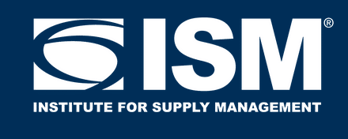Produce Season Causing Domino Effects Nationwide
The trucking industry made it through another International Roadcheck, aka Blitz Week, May 4–6. As expected, thousands of trucks came off the road, pushing more freight into the spot market. This moved rejections in a slightly upward trajectory, with more than 25% of all freight being rejected.
“During the 3-day blitz, on average, we saw a rate increase of 7%,” says Justin Maze, Transfix’s senior manager of carrier account management. “That rose to 20% on shorter hauls and freight that was picked up from the Southeast region.”
Currently, the national Outbound Tender Rejection Index (OTRI) sits at 24.9%. The Outbound Tender Volume Index (OTVI) is at 15,049, down 300 points from last week.
The remainder of May will focus on issues created by produce season. Demand in produce markets will increase the amount of capacity pulled in from other places to handle the loads. “Rates out of the Miami and Lakeland, Florida, markets are continuing to rise, as tender rejections and volumes there spike,” Maze says. “This is pulling trucks from Atlanta, one of the country’s largest markets, even while that city is still suffering its own extreme capacity shortage.”
These circumstances are causing a domino effect in neighboring markets in the Southeast. For instance, Texas, another large contributor of produce transportation, has been having an internal competition for capacity. Houston continues to climb in tender rejections and volume due to imports. It’s competing directly with large markets, such as Dallas/Ft. Worth, and produce markets, such as Laredo and El Paso. This sparks the domino effects in neighboring states, such as Arkansas and Louisiana. And it gets amplified nationwide, such as in California, where constrained capacity overflows into the southern Arizona and New Mexico markets.
Where will we see loosening? Maze says: “It’s much like a dam that could burst at any time. We have seen record import volumes piling up, and imports coming to the U.S. are not slowing, which leads to a ginormous amount of freight that needs to be moved. The Northeast still has to battle capacity constraints in its major markets due to a rise in imports, but we should still see capacity there stay flat or slightly decrease. There are some signs of relief in the Midwest, which should continue along the path it was on before Blitz Week and loosen.”
Freightwaves’ Greg Miller concurs: “The next three months should see strong gains year on year, given that 2020 imports in May, June and early July were depressed by U.S. lockdowns and as carriers “blanked” (canceled) trans-Pacific sailings. The question ahead is whether 2021 imports will keep pace with gains seen last year in September–December. The growing consensus is that they will. … The forward data for bookings due to depart from all destinations to the U.S. shows a new all-time high will be set next week.”
ISM April Report Shows Continued Growth, Despite MoM Decrease
 According to the Institute for Supply Management’s (ISM) most recent Manufacturing ISM Report on Business, the April Manufacturing PMI was 60.7%, a decrease of 4 percentage points from the March reading of 64.7%. A PMI higher than 50% indicates a growing economy, so despite this decrease, the April figure marks the 11th month in a row of expansion in the overall economy.
According to the Institute for Supply Management’s (ISM) most recent Manufacturing ISM Report on Business, the April Manufacturing PMI was 60.7%, a decrease of 4 percentage points from the March reading of 64.7%. A PMI higher than 50% indicates a growing economy, so despite this decrease, the April figure marks the 11th month in a row of expansion in the overall economy.
“All of the six biggest manufacturing industries — fabricated metal products; chemical products; food, beverage and tobacco products; computer and electronic products; transportation equipment; and petroleum and coal products, in that order — registered moderate to strong growth in April,” says Timothy R. Fiore, chair of the ISM Manufacturing Business Survey Committee. “Manufacturing performed well for the 11th straight month, with demand, consumption and inputs registering strong growth compared to March. Labor-market difficulties at panelists’ companies and their suppliers persist. End-user lead times (for refilling customers’ inventories) are extending. This is due to very high demand and output restrictions, as supply chains continue to respond to strong demand amid COVID-19 impacts.”
With the uncertainty and volatility surrounding the U.S. economic recovery, shippers need a partner that can help them adapt and excel — no matter the circumstance. Shippers turn to Transfix for our leading technology and reliable carrier network. As volumes drive higher, we are here to help: Learn more about our Core Carrier program and Dynamic Lane Rates. As part of our ongoing market coverage, we’ll continue to provide breaking news, resources and insight into emerging trends and the pandemic’s impact on the transportation industry.




